|
|
Books
|
Sharing information with technicians, smallholders and students
|
|
|
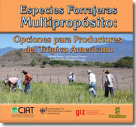 |
|
Especies forrajeras multipropósito: Opciones para productores del Trópico Americano |
|
Institution/Author:
Peters, M.; Franco, L.H.; Schmidt, A.; Hincapié, B. |
|
Publisher:
CIAT |
|
Year:
2011 |
|
This publication, directed to technicians and farmers, is a tool for the selection of tropical forage species in different soil and climatic conditions. Five sections outlining the key features of 66 species of grasses and legumes and annexes that complement the use and management of these species. Structured in a simple language and user friendly through photographs, the results of data collected over many years of evaluation of germplasm are summarized. |
|
 |
|
Forages and Farmers Case studies from South-East Asia |
|
Institution/Author:
Connell, J.;Stür, W.; Horne, P. |
|
Publisher:
CIAT |
|
Year:
2010 |
|
Since the 1960s Australia has played a key role in the development of tropical forage varieties for livestock systems in the developing world. Australian research agencies (especially the Commonwealth Scientific Industrial Research Organisation (CSIRO) and the International Center for Tropical Agriculture (CIAT) compiled the largest tropical-forage germplasm collection in the world, with over 30,000 entries. While this collection contained plants that had the technical potential to improve smallholder livestock production in South-East Asia, the potential was unproven. |
|
 |
|
 |
|
Diagnostic Survey of Livestock Production in South Kivu/Dr Congo |
|
Institution/Author:
Mass. Brigitte L.; Katunga Musale D.; Chiuri Wankiju L.; Peters Michael |
|
Publisher:
CIAT |
|
Year:
2010 |
|
The survey was funded by the Federal Ministry for Economic Cooperation and Development (BMZ), Germany through the project ‘More Chicken and Pork in the Pot, and Money in Pocket: Improving Forages for Monogastric Animals with Low-income Farmers’. |
|
 |
|
Estrategias para minimizar la escasez de forrajes en zonas con sequías prolongadas |
|
Institution/Author:
Fujisaka, S.; Holmann, F.; Peters, M.; Schmidt, A.; White, D.; Burgos, C.; Ordoñez, J.C.; Mena, M.; Posas, M.I.; Cruz, H.; Davis, C.; Hincapié, B. |
|
Publisher:
CIAT |
|
Year:
2005 |
|
En Honduras y Nicaragua existen zonas caracterizadas por épocas secas prolongadas (4 a 8 meses), durante las cuales la oferta de forrajes es deficitaria y por el predominio de explotaciones ganaderas de pequeños propietarios en sistemas doble propósito (producción de leche y carne). El Centro Internacional de Agricultura Tropical (CIAT) y el Instituto Internacional de Investigación Pecuaria (ILRI, sigla en inglés) con la colaboración de socios en Honduras y Nicaragua han venido trabajando con productores en el desarrollo de sistemas alternativos eficientes y de fácil adopción para la alimentación del ganado vacuno durante la época seca. |
|
 |
|
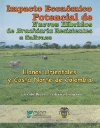 |
|
 |
|
¿Vale la pena recuperar Pasturas degradadas? Una Evaluación desde la Perspectiva de los Productores y
Extensionistas en Honduras |
|
Institution/Author:
F. Holmann, P. Argel, L. Rivas, D. White, R. D. Estrada,
C. Burgos, E. Pérez, G. Ramírez y A. Medina |
|
Publisher:
CIAT |
|
Year:
2004 |
|
Se presentan los análisis del impacto de la degradación de pasturas en la productividad animal en seis regiones de Honduras y los costos de su rehabilitación. El trabajo se realizó en marzo de 2004 mediante encuestan con 25 productores y ocho extensionistas en ganadería. Los objetivos fueron: (1) calcular la producción de leche y carne que es posible alcanzar con vacas en pasturas en distintos niveles de degradación; (2) calcular las pérdidas en ingreso como resultado del proceso de degradación; (3) conocer la proporción de pasturas que se encontraba en cada nivel de degradación dentro de las seis regiones administrativas de Honduras; y (4) identificar las distintas estrategias y costos para rehabilitar las pasturas degradadas. |
|
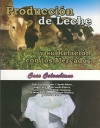 |
|
Producción de leche y su relación con los mercados: Caso colombiano |
|
Institution/Author:
Holmann, F.; Rivas, L; Carulla, J.; Rivera, B.; Giraldo, L. A.; Guzmán, S.; Martínez, M.; Medina, A.; Farrow, A. |
|
Publisher:
CIAT |
|
Year:
2004 |
|
El estudio se realizó en el 2000 en las regiones de Piedemonte de los Llanos Orientales, Caribe, Eje Cafetero, Antioquia y Altiplano Cundiboyacense de Colombia con el objeto de: (1) identificar y cuantificar el efecto de las tecnologías mejoradas en el incremento de la productividad, rentabilidad y competitividad de la industria de la leche en sistemas de producción doble propósito y especializado en distintas regiones del país; (2) determinar la relación existente entre productividad, nivel tecnológico, rentabilidad, y competitividad; (3) estudiar la evolución de los sistemas de producción de leche en Colombia; y (4) analizar la concentración del mercado y su impacto en la formación del precio de la leche recibido por los productores. |
|
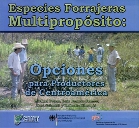 |
|
Especies Forrajeras Multipropósito: Opciones para Productores de Centroamérica |
|
Institution/Author:
PETERS, M.; FRANCO, L.H.; SCHMIDT, A.; HINCAPIE, B. |
|
Publisher:
CIAT |
|
Year:
2003 |
|
[Multi-purpose Forage Species: Options for Central American Producers] Smallholder farmers and technicians will find this tool useful for selecting forage species depending on local climate and soil conditions. The booklet contains easy-to-understand information on forage species on offer to farmers in Costa Rica, Honduras, and Nicaragua, taking into account those forage species most used in the areas covered by CIAT's Tropical Forages Project. The booklet was developed under the project " Farmer Participatory Research in Action: Selection and Strategic Use of Multipurpose Forage Germplasm by Smallholders in Production Systems in Hillsides of Central America", financed by BMZ/GTZ. The publication has five sections: (1) grasses, (2) herbaceous legumes, (3) cover legumes and green manures, (4) shrub legumes, and (5) other species of interest. Specific information is provided on the different forage species and their multiple uses over a broad range of production systems. The inclusion of color photographs facilitates the differentiation of species, and tables quickly provide the reader with a summary of the uses and characteristics of each species. |
|
 |
|
Competitividad de la Producción de Leche Frente a los Tratados de Libre Comercio en Nicaragua, Costa Rica y Colombia |
|
Institution/Author:
ESTRADA, R.D.; HOLMANN, F. |
|
Publisher:
CIAT |
|
Year:
2008 |
|
[Competitiveness of Milk Production in view of the Free Trade Agreements in Nicaragua, Costa Rica, and Colombia] The specific objectives of this study were to: (1) assess, at the farm level, the competitiveness of the systems currently used by small-scale dairy producers in Nicaragua, Costa Rica, and Colombia; (2) evaluate the effect of technological changes introduced to farms and market chains on the competitiveness of systems used by these producers; (3) describe the main elements of the free trade agreements CAFTA and NAFTA with the United States and analyze the most important implications these have for small-scale dairy producers; and (4) analyze how study results will influence the definition of R&D priorities. 74 p. |
|
 |
|
 |
|
La Cadena de Carne Bovina en Costa Rica |
|
Institution/Author:
HOLMANN, F.; RIVAS, L.; PEREZ, E.; CASTRO, C.; SCHUETZ, P.; RODRIGUEZ, J. |
|
Publisher:
CIAT |
|
Year:
2007 |
|
[The Beef Chain in Costa Rica] This study aims to characterize and analyze the beef chain in Costa Rica and accordingly identify and recommend lines of action that would optimize its operation and facilitate greater participation, particularly of small actors, in processes different from those of primary production. As a strategy, this would help improve the adoption of technologies as well as livestock productivity and profitability. The study seeks to generate strategic information necessary to establish priorities and implement lines of action directed toward public and private actors responsible for promoting technological change and enhancing the competitiveness of the country's livestock agroindustries. In addition, experience will be gained and analytical instruments developed that can be applied in similar studies elsewhere in the region. |
|
 |
|
Nuevos Sistemas de Producción Agropecuaria y Servicios Ambientales: Una Evaluación Económica en la Altillanura Colombia |
|
Institution/Author:
RIVAS, L.; HOLMANN, F.; GARCIA, J. |
|
Publisher:
CIAT |
|
Year:
2005 |
|
[New Livestock Production Systems and Environmental Services: An Economic Evaluation in the Colombian Altillanura] New farming models are evaluated using an economic, social, and environmental approach that includes several livestock, agricultural, and forest components to produce food and raw materials as well as environmental products such as C sequestration. This ex ante analysis aims to generate pertinent information to support decision-making processes regarding investments in the public and private sectors, which would allow a sustainable and competitive development scheme to be implemented in the region, with high economic, social, and environmental impact. |
|
 |
|
Evolución de la Ganadería Bovina en Países de América Central: Costa Rica, Guatemala, Honduras y Nicaragua |
|
Institution/Author:
PEREZ, E.; HOLMANN, F.; SCHUETZ, P.; FAJARDO, E. |
|
Publisher:
CIAT |
|
Year:
2006 |
|
[Evolution of Beef Cattle Production in Central American Countries: Costa Rica, Guatemala, Honduras, and Nicaragua] This baseline study aims to analyze the current situation of the beef sector along the production-consumption chain and identify constraints as well as opportunities to improve beef production, quality, safety, and trade in Costa Rica, Guatemala, Honduras, and Nicaragua. |
|
 |
|
Los Forrajes Mejorados como Promotores del Crecimiento Económico y la Sostenibilidad: El Caso de los Pequeños Ganaderos de Centroamérica |
|
Institution/Author:
HOLMANN, F.; RIVAS, L. |
|
Publisher:
CIAT |
|
Year:
2005 |
|
[Improved Forages as Promoters of Economic Growth and Sustainability: The Case of Small Livestock Producers in Central America] This study evaluates the economic viability of new improved forage materials in different-sized farms and production systems in Central America, and offers relevant economic information to producers so that technological and economic policies regarding technical change and innovation in regional livestock production can be improved within a global strategy of economic growth, reduction of poverty, and conservation of the natural resource base. The economic returns and viability of investing in improved pastures are also analyzed as well as their potential at several production scales, particularly by groups of small livestock producers that account for a significant fraction of the region's total. |
|
 |
|
Costos y Beneficios del Suministro de Heno y Ensilaje Durante la Época Seca en Honduras y Costa Rica |
|
Institution/Author:
SCHOONHOVEN, A.D.; HOLMANN, F.; ARGEL, P.; PEREZ, E.; ORDOÑEZ, J.C.; CHAVES, J. |
|
Publisher:
CIAT |
|
Year:
2005 |
|
[Costs and Benefits of Supplying Hay and Silage during the Dry Season in Honduras and Costa Rica] This study aims to (1) measure the increase in milk and meat production of animals in dual-purpose systems receiving hay and silage during the dry season, and (2) determine the production costs of these forms of forage conservation and the net profits when supplied to animals. An expected outcome would be the enhanced dissemination and adoption of hay and silage by small livestock producers in the region. |
|
 |
|
Impacto de la Adopción de Híbridos de Brachiaria Resistentes al Salivazo: Colombia, México y Centroamérica |
|
Institution/Author:
HOLMANN, F.; RIVAS, L. |
|
Publisher:
CIAT |
|
Year:
2004 |
|
[Impact of the Adoption of Brachiaria Hybrids Resistant to the Spittlebug: Colombia, Mexico, and Central America] This study aimed to estimate the potential economic impact of new Brachiaria hybrids on several production systems and ecosystems of Colombia, Mexico, and countries of Central America. The economic benefits of adopting new materials are estimated by country, production system, region, and social group (consumers and producers). Estimates are performed for two alternative scenarios: with and without international trade. |
|
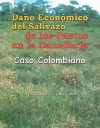 |
|
Daño Económico del Salivazo de los Pastos en la Ganadería: Caso Colombiano |
|
Institution/Author:
HOLMANN, F.; PECK, D. |
|
Publisher:
CIAT |
|
Year:
2004 |
|
[Economic Damage Caused by the Spittlebug in Livestock Production: The Case of Colombia] This study aims to quantify the economic damage resulting from reduced milk and meat production in pastures of Brachiaria decumbens presenting different levels of spittlebug infestation. |
|  |
|
Impacto de la Adopción de Pastos Brachiaria: Centroamérica y México |
|
Institution/Author:
HOLMANN, F.; RIVAS, L.; ARGEL, P.; PEREZ, E. |
|
Publisher:
CIAT |
|
Year:
2004 |
|
[Impact of the Adoption of Brachiaria Grasses: Central America and Mexico] The general objective of this study was to document the impact of forage technology on the transformation of livestock production in tropical Latin America, with emphasis on Central America and Mexico. The study specifically aimed to (1) measure the economic impact of Brachiaria materials released by national research systems, and (2) provide evidence of the changes occurring in livestock production systems, in which intensification and sustainability are priority goals. |
|
 |
|
 |
|
Economic and Social Benefits of New Forage Technologies in Mindanao, Philippines and Tuyen Quang, Vietnam |
|
Institution/Author:
BOSMA, R.H.; ROOTHAERT, R.L.; ASIS, P.; SAGUINHON, J.; BINH, L.H.; YEN, V.H. |
|
Publisher:
CIAT |
|
Year:
2003 |
|
To most smallholder livestock producers in Southeast Asia, planted forages are much more than simply a new variety of a crop with which they are already familiar. 'Planting forages' is an entirely new concept, requiring major changes in the way farmers think about and manage their crop-livestock systems. Such significant changes do not happen easily unless there are strong pressures for change...and these pressures are coming fast in Southeast Asia, in the form of disappearing traditional feed resources and rapidly increasing demand for livestock products. The most promising way to support the emergence of significant impacts from forages in smallholder livestock systems comes from matching the best varieties available with participatory approaches to research and extension. Since 1995, CIAT has been working with national partners throughout the region to apply this approach in six countries of Southeast Asia. To date two studies have documented and assessed the economic and social impacts of the new forage technologies on the livelihoods of smallholder farmers. This publication refers to the second study carried out in Mindanao, Philippines, and Tuyen Quang, Vietnam. Participatory evaluation tools together with conventional survey techniques were used to compare the livestock production systems of early and recent forage adopters. Results were stratified by wealth categories and other important cultural factors. The studies document the scale of social and economic impacts and highlight lessons that have emerged for future development. |
|
 |
|
Convenio Colombia-CIAT: Un Negocio de Amplios Horizontes para el Llano |
|
Institution/Author:
CIAT |
|
Publisher:
CIAT |
|
Year:
2002 |
|
[Colombia-CIAT Agreement: A Business of Broad Horizons for the Llanos] This publication presents the results of research conducted by CIAT in the Eastern Plains of Colombia from 1993 to 2002, under the Technical and Scientific Collaborative Agreement subscribed with Colombia's Ministry of Agriculture and Rural Development. |
|
 |
|
Indices de autores y especies forrajeras 1981-2001 |
|
Institution/Author:
|
|
Publisher:
CIAT |
|
Year:
2002 |
|
El propósito de esta publicación es servir como medio de comunicación entre los investigadores de forrajes de zonas tropicales que están involucrados en la introducción, evaluación y utilización de gramíneas y leguminosas forrajeras. |
|
 |
|
Bibliography on Desmodium ovalifolium |
|
Institution/Author:
SCHMIDT, A.; UNIVERSITY OF HOHENHEIM |
|
Publisher:
CIAT |
|
Year:
2001 |
|
The present bibliography, developed in collaboration with the University of Hohenheim, Germany, compiles citations related to information on the tropical legume species Desmodium heterocarpon subsp. ovalifolium. The bibliography attempts to examine the species and its use as cover crop and forage legume over the past decades. Several international literature databases were reviewed (e.g. AGRICOLA, AGRIS, CAB) as well as those of local scientific institutes and universities in Central and South America. References considered were those where the species was more than just mentioned and where the information provided was regarded as useful. Only a few, especially important botanical references are included. Special emphasis was placed on the assessment of so-called 'grey literature', which represents a neglected but often valuable source of information especially regarding (1) countries with a burgeoning publication culture and (2) species of regional importance. The bibliography owes much to the GreyLit project of the Centro Internacional de Agricultura Tropical (CIAT)'s Library and Communications Unit where all references are available. |
|
 |
|
Agroecología y Biodiversidad de las Sabanas en los Llanos Orientales de Colombia |
|
Institution/Author:
Rippstein G; Escobar G; Motta F. |
|
Publisher:
CIAT |
|
Year:
2001 |
|
El ecosistema de sabanas reviste importancia mundial porque, en primer lugar, cubre aproximadamente el 20% de la superficie terrestre. Tiene particular importancia en América del Sur porque ocupa el 45% del subcontinente y ha sido teatro de la expansión agropecuaria ocurrida en él en los últimos 40 años. |
|
 |
|
Economic and Social Benefits of New Forage Technologies in East Kalimantan, Indonesia |
|
Institution/Author:
BOSMA, R.H.; ROOTHAERT, R.L.; IBRAHIM |
|
Publisher:
CIAT |
|
Year:
2001 |
|
To most smallholder livestock producers in Southeast Asia, planted forages are much more than simply a new variety of a crop with which they are already familiar. 'Planting forages' is an entirely new concept, requiring major changes in the way farmers think about and manage their crop-livestock systems. Such significant changes do not happen easily unless there are strong pressures for change...and these pressures are coming fast in Southeast Asia, in the form of disappearing traditional feed resources and rapidly increasing demand for livestock products. The most promising way to support the emergence of significant impacts from forages in smallholder livestock systems comes from matching the best varieties available with participatory approaches to research and extension. Since 1995, CIAT has been working with national partners throughout the region to apply this approach in six countries of Southeast Asia. To date two studies have documented and assessed the economic and social impacts of the new forage technologies on the livelihoods of smallholder farmers. This publication refers to the first study carried out in East Kalimantan, Indonesia. Participatory evaluation tools together with conventional survey techniques were used to compare the livestock production systems of early and recent forage adopters. Results were stratified by wealth categories and other important cultural factors. The studies document the scale of social and economic impacts and highlight lessons that have emerged for future development. |
|
 |
|
How to Monitor and Evaluate Impacts of Participatory Research Projects: A Case Study of the Forages for Smallholders Project |
|
Institution/Author:
CRAMB, R.; PURCELL, T. |
|
Publisher:
CIAT |
|
Year:
2001 |
|
Although many consider farmer participatory research (FPR)-where farmers and researchers work together to develop new agricultural technologies-as "bringing substantial benefits" to farmers, others suggest it has "still to live up to its promise". FPR must therefore be carefully monitored and evaluated to ensure "quality control" and, particularly, to document and evaluate impact. This publication outlines the development of a participatory monitoring and evaluation (PM&E) framework for such participatory research programs as the "Forages for Smallholders Project" (FSP), begun in 1995 in Southeast Asia. Examples are drawn from the FSP's fieldwork on extensive upland farming systems at two contrasting sites (Malitbog, Philippines, with a wetter climate, and M'Drak, Vietnam, with more acid soils), the presentations of a 5-day workshop, and selected literature on PM&E. Part A of the publication presents the conceptual and practical issues involved in developing PM&E for the FSP. Part B reviews a range of techniques for implementing PM&E. The publication developed out of a collaborative project between CIAT and the University of Queensland, with funds from the ACIAR. |
|
 |
|
Sistemas de Alimentación con Leguminosas para Intensificar Fincas Lecheras |
|
Institution/Author:
HOLMANN, F.; LASCANO, C.E. |
|
Publisher:
CIAT |
|
Year:
2001 |
|
TROPILECHE's Project on Feed Systems with Legumes to Intensify Dairy Farms, based at CIAT, reports on 4 years (1996-2000) of activities. To improve cattle feed on Latin American dairy farms, the Project is applying a strategy that involves evaluating new forages for grazing, on-farm evaluation of new legumes as components of the grazing system, analyzing the technologies' economics and adoption, and studying the impact of improved forages on dairy production. Also discussed are five case studies involving grass/legume pastures; urea levels in milk; legumes as feed for preweaned calves, milking cows, and hybrid cows; legumes as green manure and for fixing N before planting rice; and Cratylia and sugarcane for increasing dairy production during the dry season to supply an artisanal cheese industry. The last case also demonstrated how an improved technology can have an economically positive impact on local agriculture. The Project also developed several communications media for Project users, launched two cultivars (Pasto Toledo and Veraniega), initiated legume seed production, and established alliances with public and private institutions. |
|
 |
|
 |
|
Sistemas Agropastoriles en Sabanas Tropicales de América Latina |
|
Institution/Author:
Guimaraes E; Sanz JI; Rao I; Amézquita MC; Amézquita E. |
|
Publisher:
CIAT |
|
Year:
1999 |
|
En este libro se hace una revisión de las investigaciones, los avances y las perspectivas de los sistemas agropastoriles en las sabanas tropicales de América Latina. La parte principal de la obra es el resultado del establecimiento en 1992 de la Red Agropastoril para Sabanas y de las conclusiones de los talleres de trabajao de análisis de resultados celebrados en Colombia (1992 y 1996), Brasil (1993), Venezuela(1994) y Bolivia(1995). |
|
 |
|
Feed Resources for Smallholder Livestock Production in Southeast Asia |
|
Institution/Author:
W. Stur |
|
Publisher:
CIAT |
|
Year:
1997 |
|
Proceedings of the first regional meeting of the forages for smallholders project, held in conjunction with the FAO regional working group on feed and grazing resources in Southeast Asia, and FAO regional network on better use of locally available feed resources for sustainable livestock production in Southeast Asia |
|
 |
|
La Interacción Genotipo con el Medio Ambiente en una Colección de la Leguminosa Desmodium ovalifolium |
|
Institution/Author:
CIAT, UNIVERSIDAD DE HOHENHEIM, AGENCIA ALEMANA PARA LA COOPERACION TECNICA - GTZ |
|
Publisher:
CIAT |
|
Year:
1996 |
|
[Genotype-by-Environment Interaction in a Collection of the Legume Desmodium ovalifolium: Proceedings of the First Workshop, held 19 March 1996 at CIAT, Cali, Colombia] Desmodium ovalifolium as a forage legume and cover crop has great potential for tropical America. It is adapted to acid low-fertility soils, has a stoloniferous growth habit, and tolerates heavy grazing and shade. However, the forage has high tannin contents, making it indigestible and leading to poor animal performance. Consequently, it has been relatively neglected in recent research, and little is known about this species or of the factors that influence its acceptability and nutritional quality. A collaborative project, financed by Germany's GTZ, was initiated in 1995 to study the genotype-by-environment interaction in a selected collection of D. ovalifolium. The project held its first workshop on 19 March 1996 at CIAT to review the state of knowledge on D. ovalifolium in general, discuss activities conducted so far (to 1995), and plan future activities. The workshop also aimed to integrate the project's participants and different initiatives, report on preliminary results, and promote collaboration both within the project and with people as yet uninvolved. These proceedings bring together the 20 presentations given during the workshop. |
|
 |
|
 |
|
El sistema ganadero de doble propósito en América tropical: Evolución, perspectivas y oportunidades |
|
Institution/Author:
Libardo Rivas Rios |
|
Publisher:
CIAT |
|
Year:
1992 |
|
El sistema ganadero mixto o de doble propósito (DP) se haya diseminado ampliamente en la geografía del trópico latinoamericano, caracterizándose por su tecnología tradicional, su alto grado de adaptación a los recursos naturales de la región y por su importancia socioeconómica como generador de dos productos básicos en la dieta latinoamericana: carne y leche y por utilizar recursos de bajo costo de oportunidad, particularmente tierra y en menor escala mano de obra. |
|
 |
|
Indice de temas en Informes Anuales de los Programas de CIAT [Pastos Tropicales 1978 - 1990] |
|
Institution/Author:
|
|
Publisher:
CIAT |
|
Year:
1991 |
|
En sus informes anuales, el Programa de Pastos Tropicales registra sus avances de investigación en la identificación y evaluación de gramíneas y leguminosas adaptadas al suelo, al clima y al pastoreo de las diversas regiones representativas de esos ecosistemas. Esta publicación se ha convertido a través de los afios en una fuente inapreciable de información, no sólo para los investigadores del CIA T y los miembros de redes de información cooperantes, sino también para el amplio sector de investigadores, docentes y productores de pastos interesados en la problemática del manejo y uso de especies forrajeras. |
|
 |
|
Conceptos y Metodologías de Investigación en Fincas con Sistemas de Producción Animal de Doble Propósito |
|
Institution/Author:
LASCANO, C.E.; HOLMANN, F. (EDS.). |
|
Publisher:
CIAT |
|
Year:
1997 |
|
[Concepts and Methodologies for Research on Farms with Production Systems Carrying Double-Purpose Livestock]. The book is the result of a workshop sponsored by the Consortium Tropileche to define strategies for biological and socioeconomic research on farms with this production system. It consists of three parts: (1) Measuring Animals on Farms with Double-Purpose Livestock; (2) Applying Models to Optimize Resource Use on Farms with Double-Purpose Livestock; (3) Methodologies for Land Use Characterization, Farmer Participation, and Measuring the Adoption and Impact of New Technologies. |
|
 |
|
Brachiaria: Biology, Agronomy, and Improvement |
|
Institution/Author:
MILES, J.W.; MAASS, B.L.; DO VALLE, C.B. (EDS.). |
|
Publisher:
CIAT |
|
Year:
1996 |
|
Grasses of the Brachiaria genus are now highly important forages in tropical America. The book discusses their taxonomy, application of molecular techniques for genetic improvement, exploitation of Brachiaria spp. for improving the productivity and sustainability of pasture-based livestock production in the lowland tropics, the biology and agronomy of Brachiaria, and the ecological risks involved in introducing exotic species to the American savannas. The need to compile widely scattered literature and outline future research priorities brought researchers to CIAT in 1994 for a workshop, coordinated by CIAT and EMBRAPA, and one of the few on forages that has been supported by the private sector. Also available in Spanish. |
|
 |
|
Potencial del Género Cratylia como Leguminosa Forrajera |
|
Institution/Author:
PIZARRO, E.; CORADIN, L |
|
Publisher:
CIAT |
|
Year:
1996 |
|
[The Potential of the Cratylia Genus as Leguminous Forage] The Cratylia genus comprises drought-tolerant legumes that are rich in proteins. It can be exploited as food for humans and fodder for animals living in semiarid areas such as Northeast Brazil. This ecologically plastic genus (characterized by homeostasis during development) is also adapted to the Brazilian Cerrados and certain niches in the Amazon Basin. Brazil currently has programs to study this native germplasm to prevent its genetic erosion and to strategically increase the country's offer of products for its population's direct or indirect consumption. This would reduce the high use (already at 80%) of exotic species. A symposium was held in July 1995, in Brasilia, DF, under the sponsorship of EMBRAPA, CENARAGEN, and CIAT, and with the participation of other institutions. Its theme was the collaboration for research on aspects ranging from the genus's geographical distribution, through applying biotechnology for its improvement, and final uses. |
|
 |
|
Semilla de Especies Forrajes Tropicales: Conceptos, Casos y Enfoque de la Investigación y la Producción |
|
Institution/Author:
FERGUSON, J.E. (ED.). |
|
Publisher:
CIAT |
|
Year:
1994 |
|
[Seeds of tropical forage species: Concepts, cases, and approach to research and production] These proceedings of the eighth meeting of the RIEPT Advisory Committee explain the evolution of seed supply as a series of events and efforts that begins as a research theme and finishes as a commercial activity. Between these two "areas of action" is one of transition. Three complementary phases were thus established to serve as a basis for the proceedings' structure: multiplication and use of seed by researchers, activities in the transition area, and seed production and marketing. |
|  |
|
Biology and Agronomy of Forage Arachis |
|
Institution/Author:
KERRIDGE, P.C.; HARDY, B. (EDS.). |
|
Publisher:
CIAT |
|
Year:
1994 |
|
The attributes of Arachis species as forages, for soil improvement, and for improving A. hypogaea (the common peanut) are discussed in 17 chapters on taxonomy, germplasm resources, plant physiology, diseases and pests, nutritive value, and agronomic use. The book is notable for including much previously unpublished data. Also available in Spanish. |
|
 |
|
Pastures for the Tropical Lowlands: CIAT's Contribution |
|
Institution/Author:
CIAT |
|
Publisher:
CIAT |
|
Year:
1992 |
|
This document will explain the objectives and strategies of the Tropical Pastures Program (TPP) between 1986 and 1991. The strategies underwent a process of gradual evolution during that time period. |
|
 |
|
Establecimiento y Renovación de Pasturas: VI Reunión del Comité Asesor de la RIEPT |
|
Institution/Author:
LASCANO, C.E.; SPAIN, J.M. (EDS.) |
|
Publisher:
CIAT |
|
Year:
1991 |
|
[Pasture Establishment and Renewal] This manual, considered by RIEPT's Advisory Committee as the first of its kind in Spanish for Latin America, studies the problem of establishing and renewing pastures. The objective is to encourage farmers to adopt technology that brings grasses and legumes together in pastures. It also contains indispensable information for reducing costs and calculating the risks involved in establishing and renewing tropical pastures, both at local and microregional levels. |
|
 |
|
Evaluación de Pasturas con Animales: Alternativas Metodológicas |
|
Institution/Author:
LASCANO, C.E.; PIZARRO, E. (EDS.) |
|
Publisher:
CIAT |
|
Year:
1984 |
|
[Pasture evaluation with animals: Methodological alternatives] This manual establishes the conceptual bases of Regional Trials type D of the International Tropical Pastures Evaluation Network (RIEPT). That is, pastures selected in previous stages are assessed for their potential for animal production. The manual also serves as guide to the implementation of such trials. 1986 (reprinted 1991). |
|
 |
|
Andropogon gayanus Kunth: A grass for Tropical Acid Soils |
|
Institution/Author:
TOLEDO, J.M.; VERA, R.; LASCANO, C.E.; LENNE, J.M. |
|
Publisher:
CIAT |
|
Year:
1990 |
|
A comprehensive review, carried out by CIAT, of research on this forage grass, which was introduced from Africa to the Colombian Eastern Plains in 1973. The 14 chapters cover diverse topics, ranging from the botany of Andropogon to the economic analysis of its establishment in pastures and seed production. Also available in Spanish. |
|
 |
|
Centrosema: Biology, Agronomy and Utilization |
|
Institution/Author:
SCHULTZE-KRAFT, R.; CLEMENTS, R.J. (EDS.). |
|
Publisher:
CIAT |
|
Year:
1990 |
|
These proceedings of the workshop "Centrosema: Biology, Agronomy, and Utilization" held at CIAT in 1987, covers aspects of the Centrosema gender, native of the Americas, that go from its taxonomy to its cultivation in five regions of the world. Centrosema has proved to be a highly promising forage legume for tropical and subtropical areas with low-fertility soils and has contributed to the sustainability of agricultural systems. Available in an updated version in Spanish. |
|
 |
|
A World list of fungal diseases of tropical pasture species |
|
Institution/Author:
Jillian M. Lenné |
|
Publisher:
CIAT |
|
Year:
1990 |
|
A World List of Fungal Diseases of Tropical Pasture Plants brings together many unpublished records from the International Mycological Institute, the author's personal records and Australian records as well as records resulting from detailed searches of published information. This list includes diseases recorded on 429 species of 37 genera of legumes (for example: Aeschynomene, Centrosema, Desmodium, Leucaena, Macroptilium and Stylosanthes) and on 667 species of 31 genera of grasses (for example: Andropogon, Brachiaria, Digitaria, Panicum, Paspalum, Pennisetum and Setaria), their distribution and a comprehensive bibliography of more than 300 references. As the first list of fungal diseases of tropical pasture plants, it should prove a valuable reference to pasture scientists and quarantine officers throughout tropical countries and especially where pasture germplasm introduction programmes are in progress. |
|
 |
|
Manejo de explotaciones ganaderas en las sabanas bien drenadas de los Llanos Orientales de Colombia |
|
Institution/Author:
Raul Botero |
|
Publisher:
CIAT |
|
Year:
1989 |
|
Mediante la aplicación de las recomendaciones que se ofrecen en este boletín, los ganaderos de los Llanos podrán incrementar la productividad de sus hatos sin necesidad de hacer altas inversiones de capital. La mayor rentabilidad así obtenida permitirá, a su vez, realizar inversiones que se traduzcan a mediano plazo en una tecnificación progresiva de las explotaciones. |
|
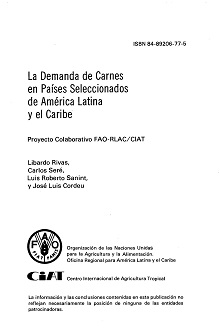 |
|
La demanda de carnes en países seleccionados de América Latina y el Caribe |
|
Institution/Author:
Libardo Rivas; Carlos Seré; Luis Roberto Sanint; José Luis Cordeu |
|
Publisher:
CIAT |
|
Year:
1989 |
|
1. Carne - Producción - América Latina. 2. Carne - Precios - América Latina. 3. Carne - Mercado - América Latina. 4. Alimentos – Consumo - América Latina. 5. Carne - Producción - Caribe (Región). 6. Carne – Precios - Caribe (Región). 7. Carne – Mercado - Caribe (Región). |
|
 |
|
Investigaciones de Apoyo para la Evaluación de Pasturas |
|
Institution/Author:
CIAT |
|
Publisher:
CIAT |
|
Year:
1987 |
|
Memorias de la tercera reunión de trabajo del comité asesor de le RIEPT 15 - 18 de octubre de 1985; 1. Pastizales - Congresos, conferencias, etc 2. Pastizales - Trópicos 3. Leguminosas forrajeras - Semillas 4. Leguminosas forrajeras - Enfermedades y plagas 5. Leguminosas forrajeras - Trópicos 6. Pastos - Fertilización. |
|
 |
|
La coleccion de centrosema del CIAT |
|
Institution/Author:
R. Schultze-Kraft; J.A. Arenas; M.A. Franco; J. Belalcazar; J. Ortiz |
|
Publisher:
CIAT |
|
Year:
1986 |
|
Datos de pasaporte basicos y distribucion geografica del germoplasma en la coleccion de ciat |
|
 |
|
 |
|
 |
|
 |
|
Potencial de Producción de Carne Vacuna en América Latina: Estudio de Casos |
|
Institution/Author:
Libardo Rivas; Jose Luis Cordeu |
|
Publisher:
CIAT |
|
Year:
1983 |
|
La situación aparentemente contradictoria de los mercados de carne internacionales de muchos países del trópico latinoamericano, en los cuales se presentan simultáneamente precios deprimidos y precios reales crecientes, llevó a la Oficina Regional de la FAO para América Latina y al Centro Internacional de Agricultura Tropical (CIAT) a realizar este estudio cooperativo sobre el potencial de la carne vacuna en América Latina. El objetivo del estudio es realizar un análisis de la situación de la ganadería en la región, con base en una serie de estudios por países, y realizar proyecciones de las tendencias que pueden esperarse |
|
 |
|
Caracterización del sector ganadero de Colombia 1983 a 1975 |
|
Institution/Author:
Reed Hertford; Gustavo Nores |
|
Publisher:
CIAT |
|
Year:
1982 |
|
Esta monografía se comenzó en 1974 cuando el CIAT inició sus estudios sobre el sector ganadero de varios países de América Latina. Alberto Valdés, Er;onomista del Programa de Ganado de Carne del Centro, invitó al autor principal en 1974 para que preparara un estudio sobre Colombia, trabajo que tomó mucho tiempo porque se hizo, parcialmente, en ratos libres y por haber regresado el autor principal a los Estados Unidos a finales de 1976. |
|
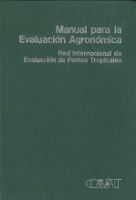 |
|
Manual para la Evaluación Agronómica: Red Internacional de Evaluación de Pastos Tropicales |
|
Institution/Author:
TOLEDO, J.M. |
|
Publisher:
CIAT |
|
Year:
1982 |
|
[Manual for agronomic evaluations: International Tropical Pastures Evaluation Network] This manual describes the methodology for conducting agronomic evaluations of regional trial types A and B conducted by RIEPT (International Tropical Pastures Evaluation Network). By using standard techniques for evaluating materials in these trials, network members will obtain more reliable information that can be compared across sites, and will help develop materials more suitable for adaptation to different Latin American ecosystems. The data collected will result in scales of economy for collaborative research. A product of a 1979 work plan, the methodology's final objective is to increase livestock productivity (per animal and per unit area) by incorporating marginal lands that encompass 1000 million ha of savannas and forests in which predominate acid and low-fertility soils, while using minimal inputs and adapted forage germplasm. |
|
 |
|
Forage Germplasm under Small-Plot Grazing: Evaluation Methodologies |
|
Institution/Author:
Osvaldo Paladines; Carlos Lascano |
|
Publisher:
CIAT |
|
Year:
1982 |
|
Proceedings of a workshop held in Cali, Colombia, 22-24 September 1982. This book seeks to unify the language as well as the concepts related to the interactions among soil, plants, and grazing animals. In addition, it intends to serve as a guide for setting up trials directed toward selecting persistent germplasm under different grazing management systems. Also available in Spanish. |
|
 |
|
Síntomas de deficiencia de macronutrimentos y nutrimentos secundarios en Pastos Tropicales |
|
Institution/Author:
Salinas JG; Sanz JI; Valencia CA; Fuentes de Piedrahita CL. |
|
Publisher:
CIAT |
|
Year:
1981 |
|
El objetivo de esta unidad es capacitar al interesado para el diagnóstico, con base en la observación de los síntomas en el campo, de las deficiencias de macronutrimentos y nutrimentos secundarios que afectan a las especies de leguminosas y gramíneas forrajeras adaptadas a los suelos ácidos e infértiles de América Tropical. |
|
 |
|
Síntomas de deficiencia de micronutrimentos y de toxicidades minerales en pastos tropicales |
|
Institution/Author:
Salinas JG; Sanz JI; Valencia CA; Fuentes de Piedrahita CL. |
|
Publisher:
CIAT |
|
Year:
1981 |
|
El objetivo de esta unidad es capacitar al interesado para el diagnóstico visual, con base en la observación de los síntomas en el campo, de las deficiencias de micronutrimentos y de las toxicidades de aluminio y manganeso que afectan a las especies de leguminosas y gramíneas forrajeras adaptadas a los suelos ácidos e infértiles de América Tropical. |
|
 |
|
Handbook for the Collection, Preservation and Characterization of Tropical Forage Germplasm Resources |
|
Institution/Author:
MOTT, G.O.; JIMENEZ, A. (EDS.) |
|
Publisher:
CIAT |
|
Year:
1979 |
|
This publication is a result of the Workshop on Collection, Preservation and Characterization of Tropical Forage Germplasm Resources, held at CIAT, Cali, Colombia, on 11-14 April 1978. The following themes were discussed: strategies for the collection and improvement of tropical forages, preparation for collection trip, germplasm collection in the field, description of the collection site, Soil sample collection and procedures, collection of strains of Rhizobium, collection and preservation of insects and pathogenic organisms, characterization and preliminary evaluation, transfer of forage germplasm, preservation of forage germplasm, data management of forage germplasm. A list of descriptors for forage germplasm collection and characterization is included. Also available in Spanish. |
|
 |
|
Pasture Production in Acid Soils of the Tropics |
|
Institution/Author:
SANCHEZ, P.A.; TERGAS, L.E. (EDS.) |
|
Publisher:
CIAT |
|
Year:
1979 |
|
Proceedings of a Seminar held at CIAT, Cali, Colombia, 17-21 April 1978. This book consists of 31 papers, 30 of which were presented at the Seminar, and one which summarizes its conclusions. They are grouped into seven parts: (1) Describes the nature of the area and its production potential. (2) Concentrates on soil-pasture relationships emphasizing nutrient requirements and nitrogen fixation. (3) Describes experiences on pasture establishment and management techniques in different regions. (4) Analyses such practices in terms of beef production and economic implication. (5) Covers the important subject of pasture seed production, a common bottleneck preventing the application of new forage technology. (6) Describes experiences on technology transfer to beef producers. (7) The conclusions of the different work groups. |
|
 |
|
Manual Para la Colección, Preservación y Caracterización de Recursos Forrajeros Tropicales |
|
Institution/Author:
Mot G.O. |
|
Publisher:
CIAT |
|
Year:
1978 |
|
Esta publicación es el resultado de una reunión de discusión sobre la Colección, Preservación y Caracterización de Germoplasma de Recursos Forrajeros Tropicales, realizada en el Centro Internacional de Agricultura Tropical (CIAT) en abril 11-14, 1978. La reunión de discusión fue copatrocinada por el Center for Tropical Agriculture, Universidad de Florida; la Agencia Estadounidense para el Desarrollo Internacional (AID); y el CIAT. La reunión de discusión y la preparación del manuscrito para este manual fueron financiadas por la AID, por medio de la donación AID/ta-G-1425 hecha a la Universidad de Florida. |
|
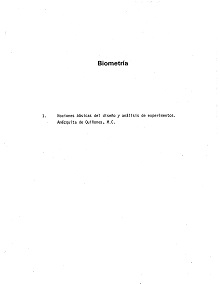 |
|
Biometría: Nociones básicas del diseño y análisis de experimentos |
|
Institution/Author:
Amézquita de Quiñones, M.C. |
|
Publisher:
CIAT |
|
Year:
1975 |
|
El propósito de este ciclo de tres conferencias es explicar en una forma fácil y clara: a) Cuál es el papel de "Biometría" en CIAT. b) Cuál es el proceso a seguir cuando se desea efectuar un experimento. c) Cuál es el uso de la Estadística y la Probabilidad en la experimentación. d) Cuáles son los diseños estadísticos más utilizados en experimentación agrícola y pecuaria. e) Cómo analizar algunos diseños balanceados básicos. Aunque el estudio del Diseño y Análisis de experimentos conlleva una teoría matemática muy sólida y elegante, no es nuestro deseo profundizar en ella a través de estas conferencias. Más bien, explicaremos cuáles son los diseños básicos que existen, cuándo se pueden usar y cómo se deben analizar. |
|
 |
|
 |
|
|
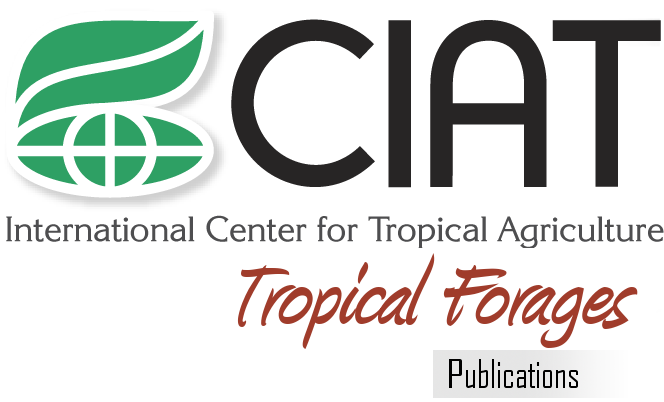
 Contact
Contact
































































